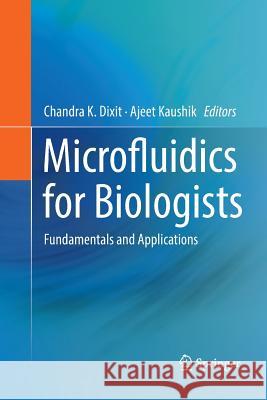Microfluidics for Biologists: Fundamentals and Applications » książka
topmenu
Microfluidics for Biologists: Fundamentals and Applications
ISBN-13: 9783319820200 / Angielski / Miękka / 2018 / 252 str.
Kategorie BISAC:
Wydawca:
Springer
Język:
Angielski
ISBN-13:
9783319820200
Rok wydania:
2018
Wydanie:
Softcover Repri
Ilość stron:
252
Waga:
0.37 kg
Wymiary:
23.39 x 15.6 x 1.4
Oprawa:
Miękka
Wolumenów:
01
Dodatkowe informacje:
Wydanie ilustrowane











